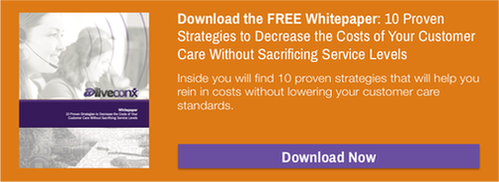Diagnosing Your Service: Analytics and CRM for Homecare Support
Providing effective home and healthcare service for clients is impossible without the right technology and analytics to back you up.
Before you can help your clients, you need to know your clients.
While gathering client data might seem like a goal because everyone is doing it, not taking the time to ask why you collect it, and how it can be used to reach client satisfaction targets makes it nothing more than a storage problem for your IT resources to manage. Data is useless on its own; its value comes from the insight it gives client service managers. Optimized CRM systems and effective analytics are essential to service managers who want their client service representatives to deliver personalized homecare service that improves the client experience.
Customer Segmentation
Quality customer service relies on knowing your client base, and service for homecare is no exception.
CRM systems allow medical client service operations to gather client data during every touchpoint and across any channel. This data can be applied to future interactions to personalize service and proactively address client or caregiver needs—research sponsored by Conversant showed that 94 percent of marketers and customers viewed personalization as a “very important” part of meeting business goals. Customization of service is of particular importance when handling homecare clients due to the personal and recurring nature of situations that arise.
This type of personalized information can be used to:
- Dynamically segment clients together into groups for faster support and more personalized service.
- Match callers with service reps who share similarities across language, age range, and specialized homecare training to ensure that each client or caregiver calling on behalf of the client is connected with the agent most capable of helping them.
- Customize messages and responses for each client based on previous interactions and forecasted needs.
Once your clients have been segmented into groups for optimal efficiency, you can begin examining your analytics to see possible areas for improvement.
First Contact Resolution
First Contact Resolution is a metric closely intertwined with the success of your client service centre. According to data gathered by Service Quality Management Group via Parature, every 1 percent improvement in FCR translates to a 1 percent increase in customer satisfaction. High FCR rates nearly always create better client satisfaction, lower operating costs, and reduced call volume. Naturally, FCR is a good predictor of service centre efficiency and the overall client experience.
This metric becomes even more important in the homecare field—many problems faced by clients and their caregivers involve medical issues, personal support workers (PSWs), meals or transportation services, and other care related to quality of life. Needing two or three attempts to solve these issues will seriously hurt your client satisfaction rates, and may even exacerbate problems that require fast action to correct. Your CRM systems can provide your representatives with the knowledge they need to address client problems on the first run. Good FCR rates may be important for customer service, but for quality client care, they’re a necessity.
Satisfaction through Analytics
FCR may be one of the most important analytics to measure, but it’s by no means the only metric affecting the client experience. As we mentioned above, the point of your analytics isn’t just to empower your service representatives; it’s to provide a service experience for your clients and potential clients that meets and exceeds their expectations.
To this end, there are other key metrics that you’ll need to keep your eye on:
- Average Speed of Answer: How long your clients or caregivers need to wait before speaking with a live agent. Slow responses can be problematic when clients need medical assistance, making it essential that providers reduce hold times with predictive staffing during periods of heavy call volume, technology (like IVR systems and call-back options), and service reps who are trained to respond quickly and efficiently.
- Call Abandonment: The percentage of clients that hang up before your representatives can speak with them. This metric has a strong correlation with your average hold time metric, and can be reduced through strategic uses of self-service options and outreach through multiple channels aside from your phones.
- Average Call Length: How long it takes your service reps to resolve their client’s issues. This metric may vary depending on the complexity of the issue and the experience level of your representatives, but should be monitored all the same to assess your cost-per-call rates and overall level of performance.
Knowledge is Power
At their most basic, these metrics are indicators of the quality of your service and the type of experience your clients will have. As you gather data with your CRM systems, you should find that these numbers improve—the more personalized information you have on each caller, the easier it is to diagnose their issues and find solutions. Effectively leveraging these analytics with your CRM systems is the best way to improve the quality of your service and improve your client’s experience with your service centre. Want to learn more about analytics for personalized client care? Check out our free white paper!










